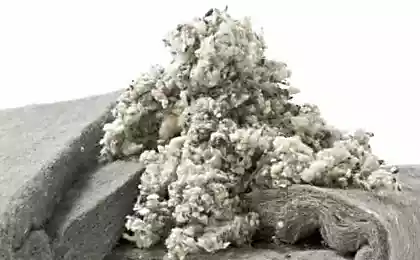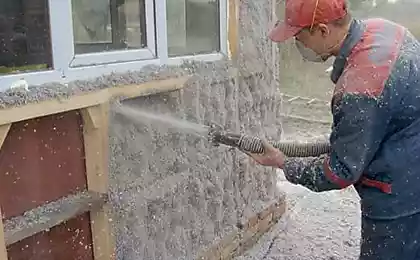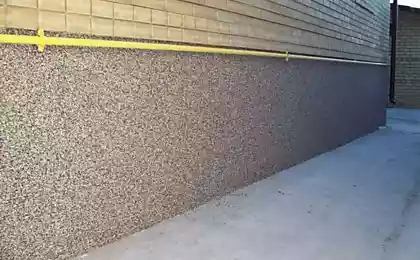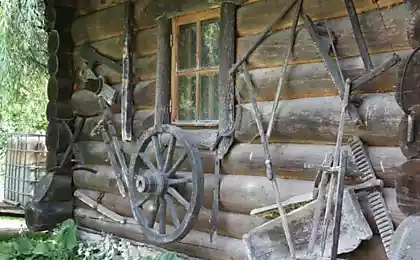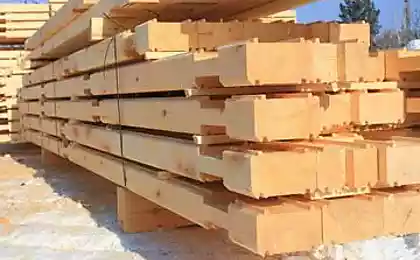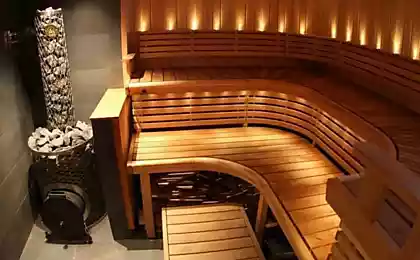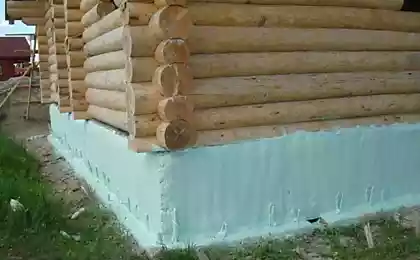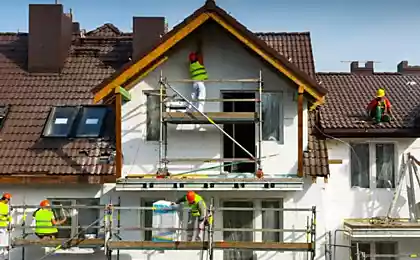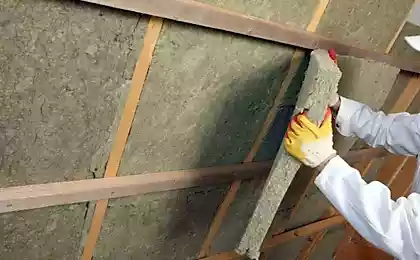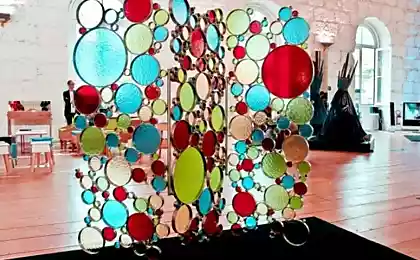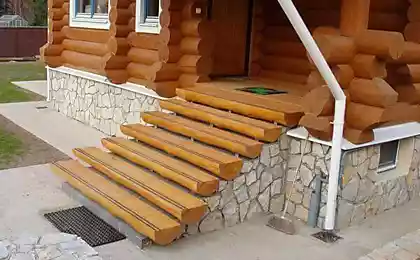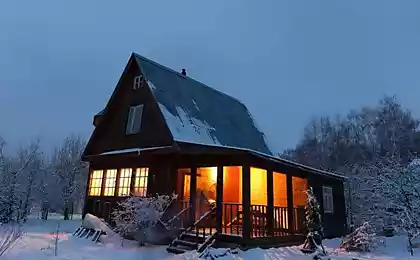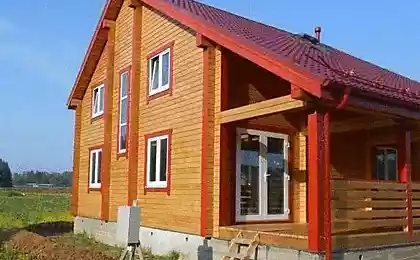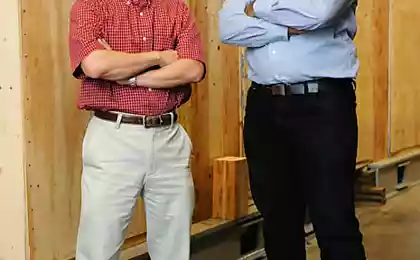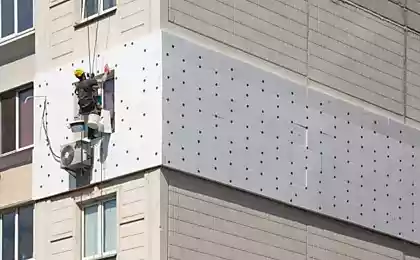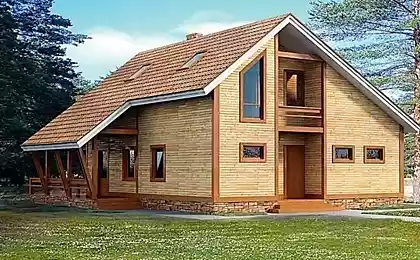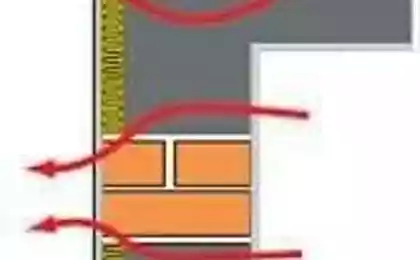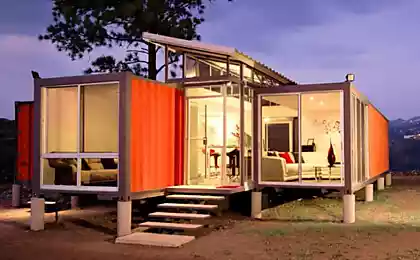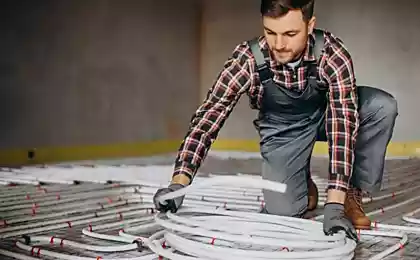717
7 common mistakes when insulation of a wooden house
The question "How to insulate a wooden house?" — worries many. Log and timber framed houses built several decades ago have aged and the winter months begin to miss the cold.
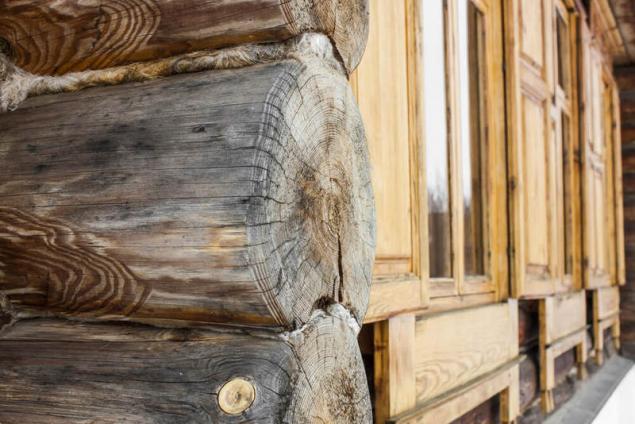
Therefore it is very important to exclude possible oversights that regularly arise with unqualified insulation wooden frame modern materials. Let's consider the most common of them.
Mistake # 1. The insulation of carcass without inspection of wood usually insulated already "old" log cabins. On the one hand, it is technologically convenient: the frame is already finally settled, and the size of the structure unchanged. However, recent years could not fail to leave traces on biologically living material – wood.
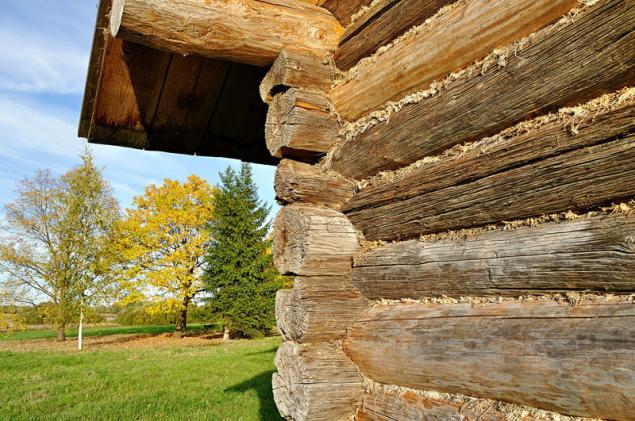
Therefore, before the planned thermal insulation, which implies that the logs will not access for many years, you should thoroughly explore all the crowns and rejecting defective pieces. If the logs wound up devouring the wood bug, I will make the conservative assumption that the house is impractical to insulate. Drastic medicine for such a case, in addition to the weekly forty-degree frost, had not yet been invented.
Good wood should be impregnated with fire-fighting and antiseptic composition, and thoroughly dried. To perform the insulation on the bare wood is a mistake.
Mistake # 2. A careless attitude to the konopatkoy Traditional caulking is performed, strictly speaking, for thermal insulation of the frame, and to prevent it from blowing off, which ultimately affects the retention of heat in the house.
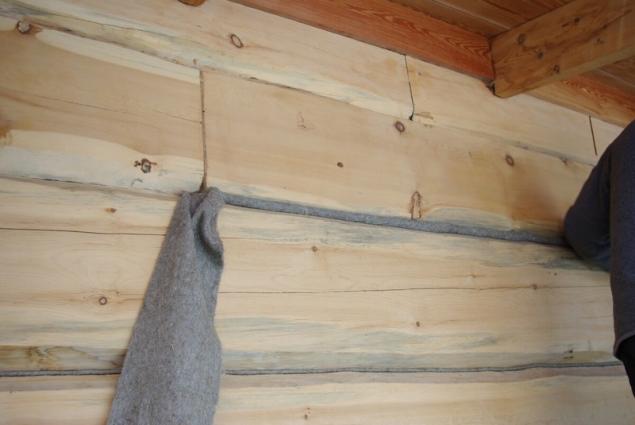
Deciding to insulate timbered facades, pay attention to the condition of the caulking on all the crowns. It is not necessary to dismiss this action. Perhaps it is due 2-3 defects of this natural insulator you have at home in the winter and cold.
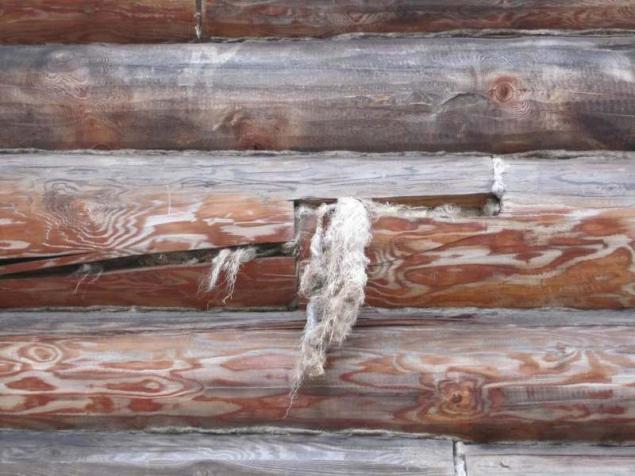
Mistake # 3. The insulation of the frame from the wrong side which side to insulate a log cabin? This is truly a conceptual question that must be resolved for once and for all. In addition, it is useful to share the gained knowledge with friends and neighbors.
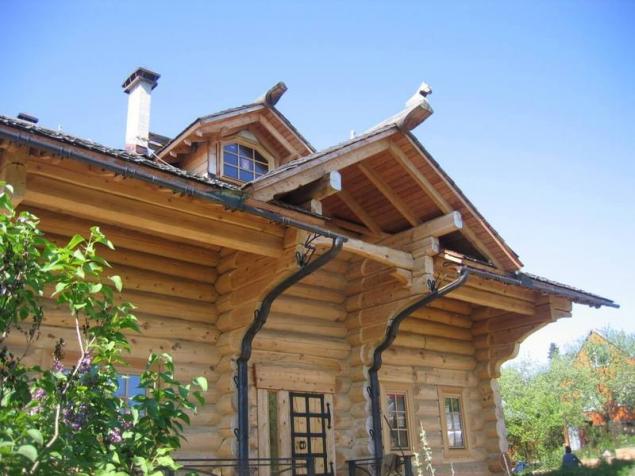
Don't get bogged down in the basics of building heating engineering and not delving into the meaning of the obscure phrase "dew point" (which is the basis of selecting the location of insulation), take it on faith craft postulate: the insulation structures is performed from the outside. This setup improves the operating and supporting wall material (wood rims), and the insulation. Otherwise, the heater, and the wood logs will get wet from the moist vapour, is inevitable in the atmosphere of human habitation. Of course, this we do not seek.
Mistake # 4. Thoughtless choice of insulating materialin the Construction markets to literally and figuratively littered with a variety of insulators.
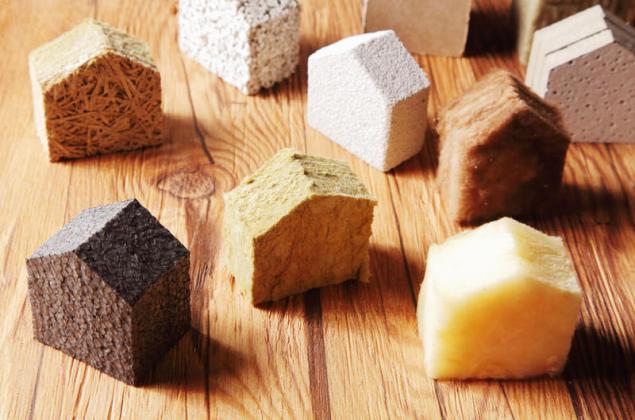
However, if you make strict systematization in this abundance, we find that it is dominated by only 3 types of materials available for wooden log cabins. This insulation:
I'm not against the use of this material, but I vote with both hands for its judicious application. There is, for example, where the fire never gets in the basement, in the basement, in the crawl space. Here it is true.
Choose between glass wool and mineral analogue of harder. Both are ideal for insulating a log home.
Mistake # 5. The neglect of transport and storage of materialInsulation materials should be dry. Only in this case they "hold" heat. And if the material gets wet, its insulating capacity is reduced landslide.
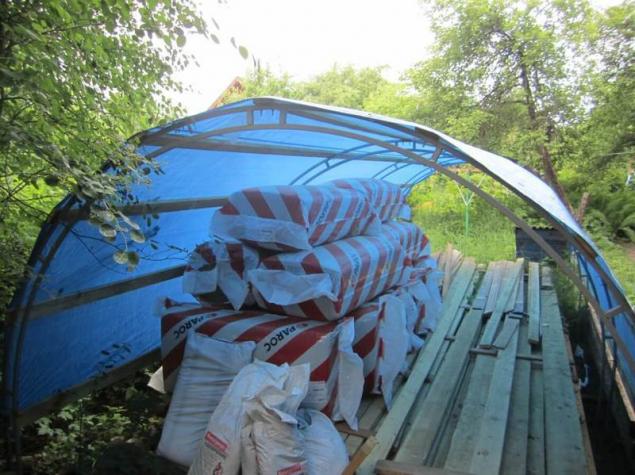
Remember the conventional "kitchen" situation: what kind of tack you will grab the metal handle of a hot pan — dry fabric or damp/wet? I am sure that after a moment's thought you will choose the dry option. So the heater has to be always dry. Factories in the production it is packaged in the packaging (often the shrink) wrap and is well protected from the climatic moisture. But it is necessary to remove the tape... So:
Unpack the heater the day before use and always under a canopy, and even better — insulated house. After fixing of insulation on the wall go directly to the veneer plaster or safety panels (siding, etc.). Do not leave insulation exposed, risking to wet them "to the bone" summer rain slanting.
Mistake # 6. The selection of flexible mats instead of the hard boards In the construction market you can find 2 options of insulating materials — flexible Mat and hard plate. At first glance, this is exactly the same materials. So what to choose for facade insulation?
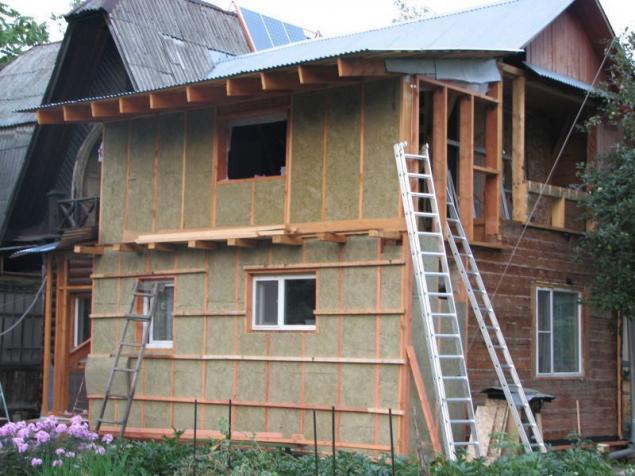
If you decide to opt for the mats that go wrong, since being in vertical position the heater begins somewhere to SAG, forming a gap, which rushes cool air, those "cold bridges", dezavuiruya consumer all the charm of modern insulation.
Hard plate keep its size unchanged for the whole period of operation. For laid on a roof-top construction panels, it is possible to go without loss of thermal insulation quality.
Why, then, are made of flexible mats? They are indispensable for the insulation of horizontal surfaces — the crawlspace and the floors. There, they fundamentally can not SAG and form a gap for heat consumption.
Mistake # 7. Incorrect determination of the thickness of the insulating layer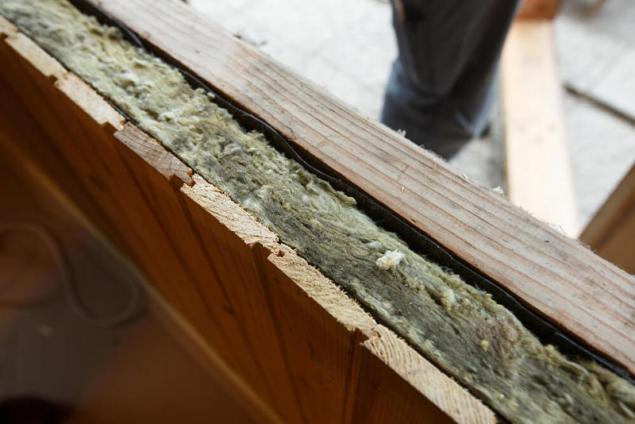
We can only confirm that for thermal insulation of log houses will need two layers of material with a thickness of 50 mm laid on one another. I'll note that two layers is enough for the climatic conditions of Central Russia. In the North on a wooden wall will have to put three layers of insulation, and in southern regions it will be possible to do one. published
P. S. And remember, only by changing their consumption — together we change the world! ©
Source: www.7dach.ru/Oleg_Sanko/7-tipichnyh-oshibok-pri-uteplenii-derevyannogo-doma-71669.html

Therefore it is very important to exclude possible oversights that regularly arise with unqualified insulation wooden frame modern materials. Let's consider the most common of them.
Mistake # 1. The insulation of carcass without inspection of wood usually insulated already "old" log cabins. On the one hand, it is technologically convenient: the frame is already finally settled, and the size of the structure unchanged. However, recent years could not fail to leave traces on biologically living material – wood.

Therefore, before the planned thermal insulation, which implies that the logs will not access for many years, you should thoroughly explore all the crowns and rejecting defective pieces. If the logs wound up devouring the wood bug, I will make the conservative assumption that the house is impractical to insulate. Drastic medicine for such a case, in addition to the weekly forty-degree frost, had not yet been invented.
Good wood should be impregnated with fire-fighting and antiseptic composition, and thoroughly dried. To perform the insulation on the bare wood is a mistake.
Mistake # 2. A careless attitude to the konopatkoy Traditional caulking is performed, strictly speaking, for thermal insulation of the frame, and to prevent it from blowing off, which ultimately affects the retention of heat in the house.

Deciding to insulate timbered facades, pay attention to the condition of the caulking on all the crowns. It is not necessary to dismiss this action. Perhaps it is due 2-3 defects of this natural insulator you have at home in the winter and cold.

Mistake # 3. The insulation of the frame from the wrong side which side to insulate a log cabin? This is truly a conceptual question that must be resolved for once and for all. In addition, it is useful to share the gained knowledge with friends and neighbors.

Don't get bogged down in the basics of building heating engineering and not delving into the meaning of the obscure phrase "dew point" (which is the basis of selecting the location of insulation), take it on faith craft postulate: the insulation structures is performed from the outside. This setup improves the operating and supporting wall material (wood rims), and the insulation. Otherwise, the heater, and the wood logs will get wet from the moist vapour, is inevitable in the atmosphere of human habitation. Of course, this we do not seek.
Mistake # 4. Thoughtless choice of insulating materialin the Construction markets to literally and figuratively littered with a variety of insulators.

However, if you make strict systematization in this abundance, we find that it is dominated by only 3 types of materials available for wooden log cabins. This insulation:
- mineral wool,
- of glass,
- polystyrene — mesh and extruded.
I'm not against the use of this material, but I vote with both hands for its judicious application. There is, for example, where the fire never gets in the basement, in the basement, in the crawl space. Here it is true.
Choose between glass wool and mineral analogue of harder. Both are ideal for insulating a log home.
Mistake # 5. The neglect of transport and storage of materialInsulation materials should be dry. Only in this case they "hold" heat. And if the material gets wet, its insulating capacity is reduced landslide.

Remember the conventional "kitchen" situation: what kind of tack you will grab the metal handle of a hot pan — dry fabric or damp/wet? I am sure that after a moment's thought you will choose the dry option. So the heater has to be always dry. Factories in the production it is packaged in the packaging (often the shrink) wrap and is well protected from the climatic moisture. But it is necessary to remove the tape... So:
Unpack the heater the day before use and always under a canopy, and even better — insulated house. After fixing of insulation on the wall go directly to the veneer plaster or safety panels (siding, etc.). Do not leave insulation exposed, risking to wet them "to the bone" summer rain slanting.
Mistake # 6. The selection of flexible mats instead of the hard boards In the construction market you can find 2 options of insulating materials — flexible Mat and hard plate. At first glance, this is exactly the same materials. So what to choose for facade insulation?

If you decide to opt for the mats that go wrong, since being in vertical position the heater begins somewhere to SAG, forming a gap, which rushes cool air, those "cold bridges", dezavuiruya consumer all the charm of modern insulation.
Hard plate keep its size unchanged for the whole period of operation. For laid on a roof-top construction panels, it is possible to go without loss of thermal insulation quality.
Why, then, are made of flexible mats? They are indispensable for the insulation of horizontal surfaces — the crawlspace and the floors. There, they fundamentally can not SAG and form a gap for heat consumption.
Mistake # 7. Incorrect determination of the thickness of the insulating layer

We can only confirm that for thermal insulation of log houses will need two layers of material with a thickness of 50 mm laid on one another. I'll note that two layers is enough for the climatic conditions of Central Russia. In the North on a wooden wall will have to put three layers of insulation, and in southern regions it will be possible to do one. published
P. S. And remember, only by changing their consumption — together we change the world! ©
Source: www.7dach.ru/Oleg_Sanko/7-tipichnyh-oshibok-pri-uteplenii-derevyannogo-doma-71669.html
